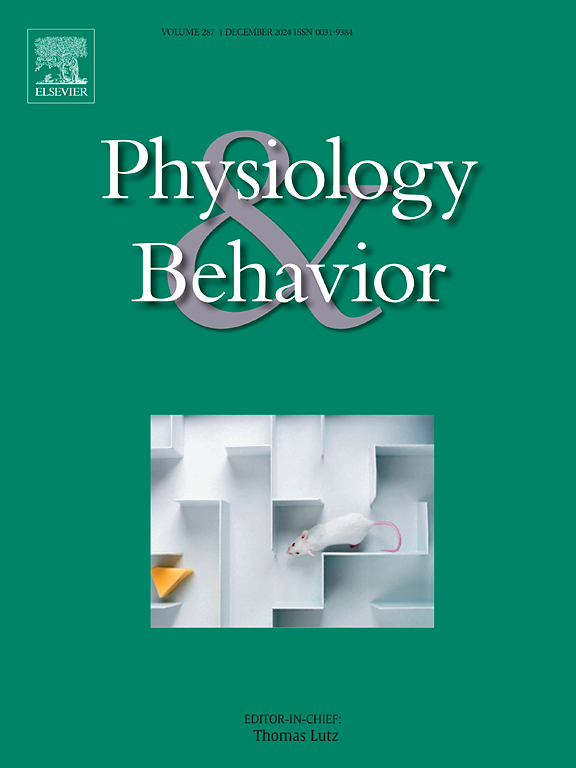Forced treadmill exercise in the male rat: effect on food intake and c-Fos expression
IF 2.5
3区 医学
Q2 BEHAVIORAL SCIENCES
引用次数: 0
Abstract
The current study investigated the effect of forced treadmill exercise intensity on food intake in rats, and then on c-Fos immunoreactivity in selected brain sites. In Experiment 1, male Sprague Dawley rats (n = 24) were exposed to three intensities of forced treadmill exercise (32.5, 54 and 75.8 m/min) and food intake was measured 1, 2 and 3 hrs post-exercise. All three exercise intensities significantly reduced food intake at all three timepoints (p < 0.05), with the maximum numerical effect observed at 54 m/min. In Experiment 2, the rats were exposed to forced treadmill exercise at 54 m/min and were then sacrificed 30 min post-exercise. Forced treadmill exercise significantly increased c-Fos expression in several brain areas associated with feeding, these areas were the central nucleus of the amygdala, the dorsal bed nucleus of the stria terminals, and in the paraventricular nucleus, the ventromedial, dorsomedial, and lateral hypothalamus. This is the first report of forced treadmill exercise in the male rat resulting in the expression of c-Fos in the dorsal bed nucleus of the stria terminalis and ventromedial hypothalamus. A brain site not associated with feeding behaviour, the frontal cortex, was analysed to control for false positives, this revealed no significant c-Fos expression following forced treadmill exercise.
雄性大鼠的强制跑步运动:对食物摄入和c-Fos表达的影响。
目前的研究调查了强制跑步机运动强度对大鼠食物摄入的影响,然后对选定脑部位的c-Fos免疫反应性的影响。在实验1中,雄性Sprague Dawley大鼠(n=24)被暴露于三种强度(32.5,54和75.8 m/min)的强制跑步机运动中,并在运动后1,2和3小时测量食物摄入量。所有三种运动强度在所有三个时间点都显著减少了食物摄入量(p
本文章由计算机程序翻译,如有差异,请以英文原文为准。
求助全文
约1分钟内获得全文
求助全文
来源期刊

Physiology & Behavior
医学-行为科学
CiteScore
5.70
自引率
3.40%
发文量
274
审稿时长
47 days
期刊介绍:
Physiology & Behavior is aimed at the causal physiological mechanisms of behavior and its modulation by environmental factors. The journal invites original reports in the broad area of behavioral and cognitive neuroscience, in which at least one variable is physiological and the primary emphasis and theoretical context are behavioral. The range of subjects includes behavioral neuroendocrinology, psychoneuroimmunology, learning and memory, ingestion, social behavior, and studies related to the mechanisms of psychopathology. Contemporary reviews and theoretical articles are welcomed and the Editors invite such proposals from interested authors.
 求助内容:
求助内容: 应助结果提醒方式:
应助结果提醒方式:


